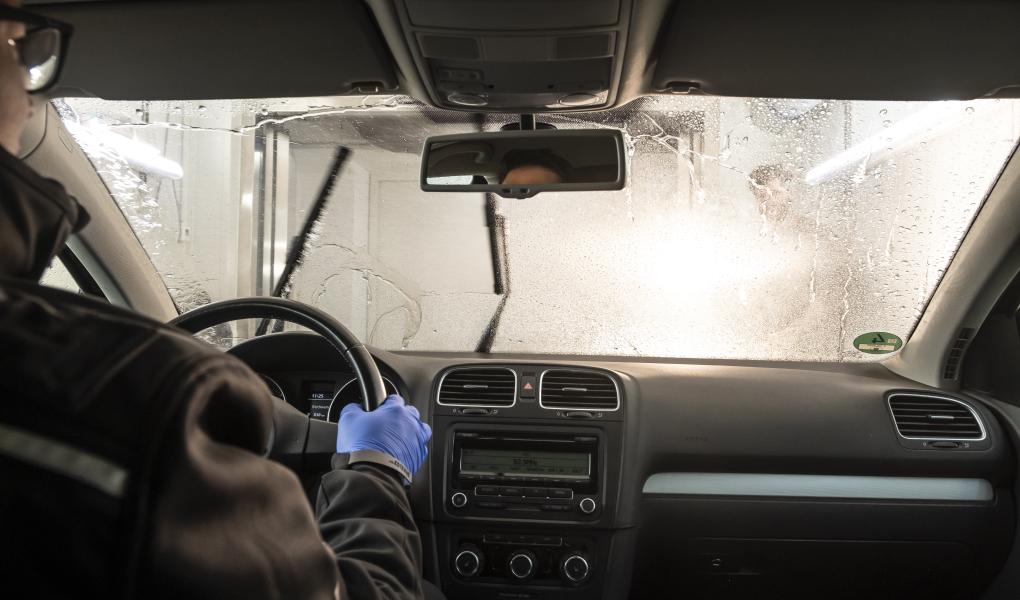Good visibility while driving is crucial for quick reactions and avoiding accidents. A pair of reasonably fresh, well-functioning windscreen wipers can make the difference between a clear view and impaired visibility, especially in poor driving conditions like darkness, rain, snow, or fog.
Windscreen wipers may seem simple at first glance, but their effectiveness depends on a balanced combination of design, materials, and functionality. A good wiper blade should clean efficiently and work quietly, while also performing well under different weather conditions and at various speeds.
When rain and slush are no longer easily swept away, it’s time to replace the wipers. But then comes the inevitable question: Is the most expensive always the best? Or will a cheaper pair suffice?
Testfakta commissioned the independent testing and research lab Dekra Automobil to test "flatblade" wipers that fit a relatively new VW Golf Mk7. The blades were evaluated based on factors such as ease of installation, performance, and durability.
[PDF]
Finding the right type of windscreen wipers often depends on the vehicle model and year. You can find blades that fit by entering your car's registration number in-store or on retailer websites. Note that wipers are often sold individually, so you’ll likely need to replace both.
Easy Installation for Most Models
Replacing windscreen wipers can feel daunting since it’s often done so rarely that the process is forgotten. Fortunately, today’s wipers are relatively easy and intuitive to install, even if the instructions for several models in the test were lacking. Bosch and SWF provided clear instructions and could be mounted without issues. Only Hella’s wiper was tricky to attach, requiring force to remove the pre-installed adapter.
Performance Varies at High Speeds
All tested wipers performed adequately at low speeds, although Valeo, Mekster, Continental, and Hella didn't perform at their best. However, when tested at higher highway speeds, there were greater differences in cleaning performance. Bosch and SWF continued to perform very well, while Biltema and Trico had minor issues. Valeo, Mekster, Continental, and Hella showed significantly worse results at high speeds, with temporary streaks and water left in the field of vision. However, none of the wipers caused serious visibility impairment.
Minimal Impact from Cold and Road Salt
None of the tested windscreen wipers were notably affected by extreme cold. In one test, the rubber strip was frozen to -20 degrees and dropped onto the windshield, and all samples withstood it without damage. The wipers were also exposed to salt to simulate long-term road salt exposure. The products from Mekster, Biltema, and Hella showed minimal signs of corrosion at the edges of the supporting metal frame, but no impact was noted on the plastic strip itself, so there was no reduction in visibility.
Overall, Bosch received the highest rating of 9.5, closely followed by SWF at 9.4. The test's cheapest wiper from Biltema also performed well, securing third place with 8.7. Valeo, the most expensive wiper, showed worse performance at high speeds, just like Mekster, Continental, and Hella, landing them lower in the rankings.
Yanick Fuhrmann, the lead tester at Dekra Automobil, who conducted the test, was surprised by the results.
“Bosch and SWF delivered good results in terms of performance, instructions, and installation. But Hella and, to some extent, Continental were a big disappointment, which I didn’t expect given that they are well-known mid-range brands.”
There is a significant price difference between the products despite similar functionality. For example, Biltema's wiper costs just over 100 SEK per unit, while Bosch’s is priced at around 292 SEK per unit. Fuhrmann suggests that the price differences are likely due to marketing and packaging costs.
“Bosch, for example, seems to have many different packaging options tailored to specific car manufacturers and models. Handling that is probably much more costly compared to manufacturers who simply include all adapters in the packaging. Major companies like Bosch and SWF also likely invest more in development and testing, which other companies can then benefit from.”


